How to Buy a Business with an SBA Loan
Updated for 2019: SBA requirements allow you to buy a business for as little as 10% down. This low down payment allows you to leverage your money, maximize your return on investment, and buy a more profitable, stronger business.
Owning a business is associated with professional freedom, envious lifestyles, financial reward, and personal fulfillment. You can buy a business with an SBA loan with as little as 10% down. This low down payment allows you to leverage your money, maximize your return on investment, and buy a more profitable, stronger business.
In general, the less you have to put down on a business, the more expensive a business you can buy, the more established the business will be, and the more money the business will make.
In addition to the low down payment requirement, the SBA loan program has a number of other benefits that make it the perfect loan to buy a business:
- Easier qualification (i.e. lower net worth and credit score requirements)
- Low-interest rates
- Long loan terms
- No balloon payments
- Working and operating capital allowed in the loan
- No collateral requirements
How to Buy a Business: 10-Step Guide to Buying a Business
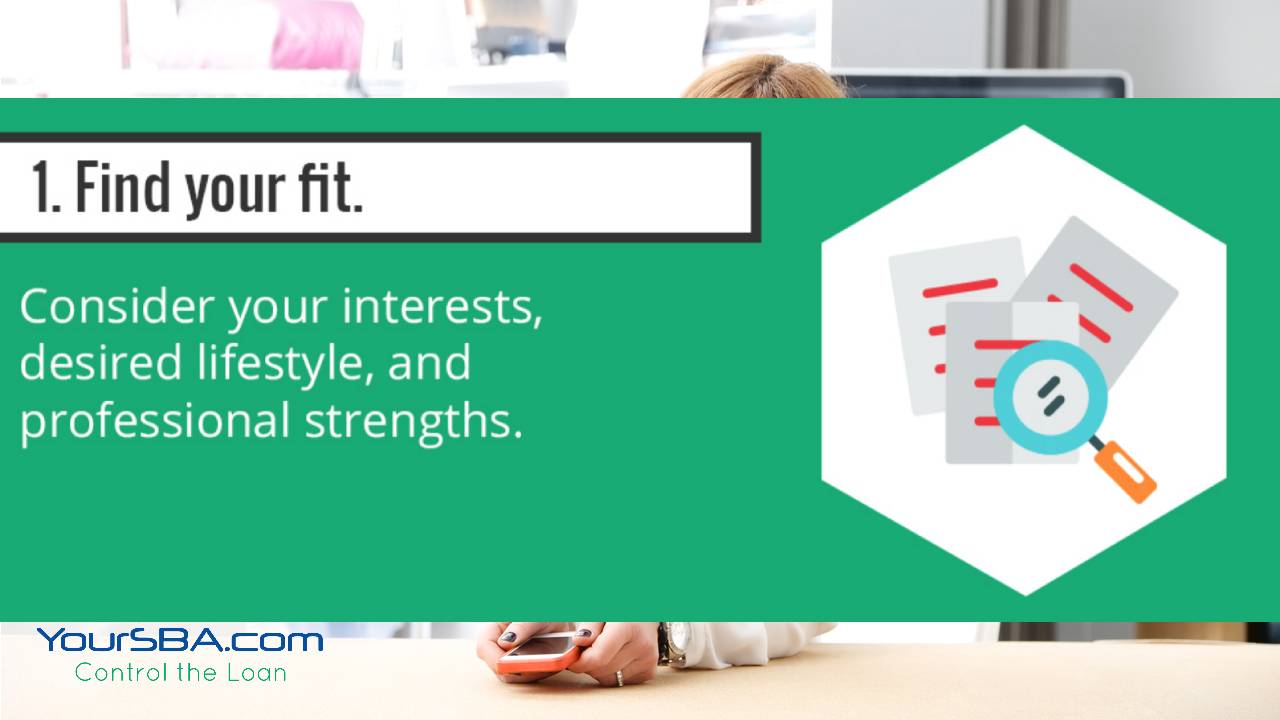
Step 1: Determine what type of business you are looking for
Keep these 3 things in mind when buying a business in order to find a business well-suited for you:
- Think about what you enjoy and what interests you. This will help you narrow in on types of businesses and industries.
- Think about what kind of lifestyle you want – think about work hours, salary, flexibility, location, etc.
- Think about what will complement your unique skill set, past work experience, and knowledge. You want to find a business that you can grow. Keep in mind that the value is not in where the business currently is, but where you will take it.
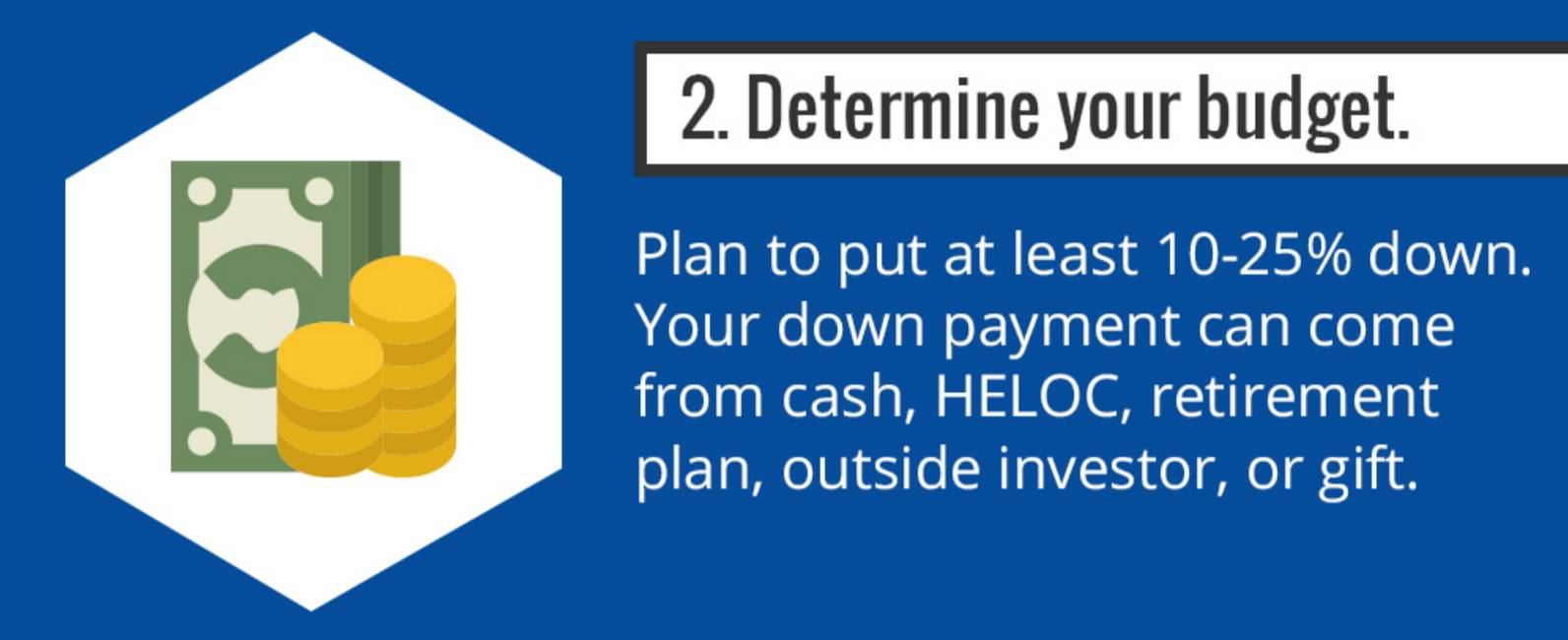
Step 2: Determine your budget
After you have an idea of what type of business you want to buy, you need to determine a price range for your business search. The SBA loan program allows you to leverage your money and buy a business with as little as 10% down; this means that you can afford to buy a business 10 times what you would be able to afford without a loan.
Calculate the total amount of money you have available for a down payment.
- Cash +
- Home equity line of credit (HELOC) +
- Retirement plan +
- Outside investor +
- Gift from family or friend +
- = Total amount available for down payment
Calculate your borrowing limit
A lender will lend 75-90% of the total project cost. The total project cost is the total amount of money included for the business or real estate purchase plus working capital plus closing costs. The remaining 10-25% equity injection can come from your down payment and a loan from the seller.
Regardless of how much the seller finances, you should plan to come in with at least 5% down yourself.
If the seller carries a note for the difference and you come in with 5% down, you can multiply your total amount available for down payment by 20 to determine your borrowing limit.
If the seller does not carry a note, you will have to come up with 10-25% down yourself and can multiply your total amount available for down payment by 4-10 to determine your borrowing limit.
Important note regarding seller financing: In order for a seller financing note to count toward the equity injection, it must be on full standby for the term of the SBA loan – full standby means that the seller agrees to finance a portion of the loan, and can accrue interest on that loan, but cannot accept any payments from the borrower for at least the first 24 months. If seller financing is not contributing to the equity injection requirement, the seller note is not required to be on full standby for the term of the SBA loan.
There are a number of advantages to including seller financing:
- It lowers your down payment requirement, allowing you to maximally leverage your down payment
- It is an indication of the seller’s confidence in the business and the business’s ability to eventually pay them back
- It gets the seller to have some “skin in the game” so they will be more likely to be more helpful during the transition period
- It allows the seller some tax benefits by not taking the full sale price all at once
Although many listings will not mention the availability of seller financing, it is always worth inquiring about. The large majority of business acquisitions do involve some level of seller financing and many sellers will gladly accept an offer if it means getting their business sold and only having to hold a small seller note for 2 years.
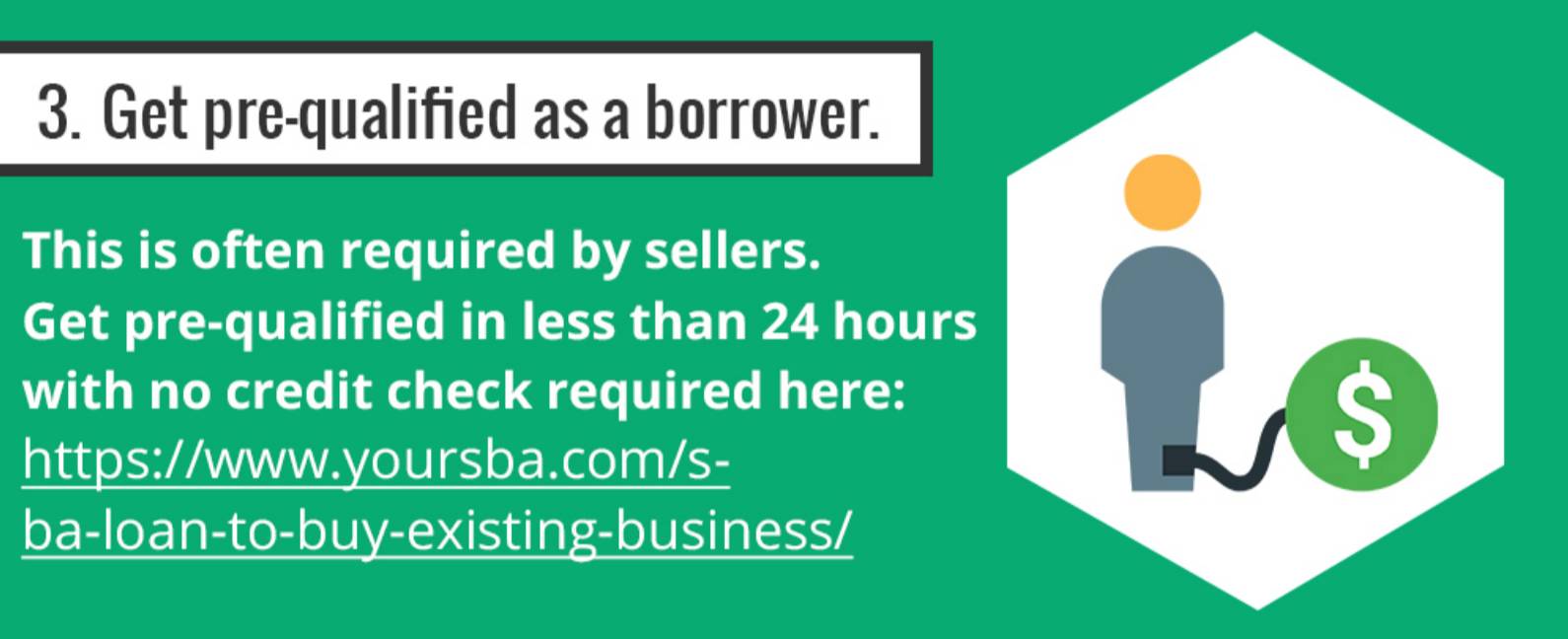
Step 3: Get pre-qualified as a borrower to get a pre-qualification letter
A pre-qualification can help you accomplish a number of things:
- Determine your borrowing limit
- Ensure that you are eligible for the SBA loan program
- Receive a pre-qualification letter to help in your negotiations
- Get a headstart on your application
- Meet the requirement of being pre-qualified as required many brokers and sellers
Note: Most banks will do a hard credit pull for pre-qualification. This will lower your credit score and is not necessary. Click Here to Get Pre-Qualified Today
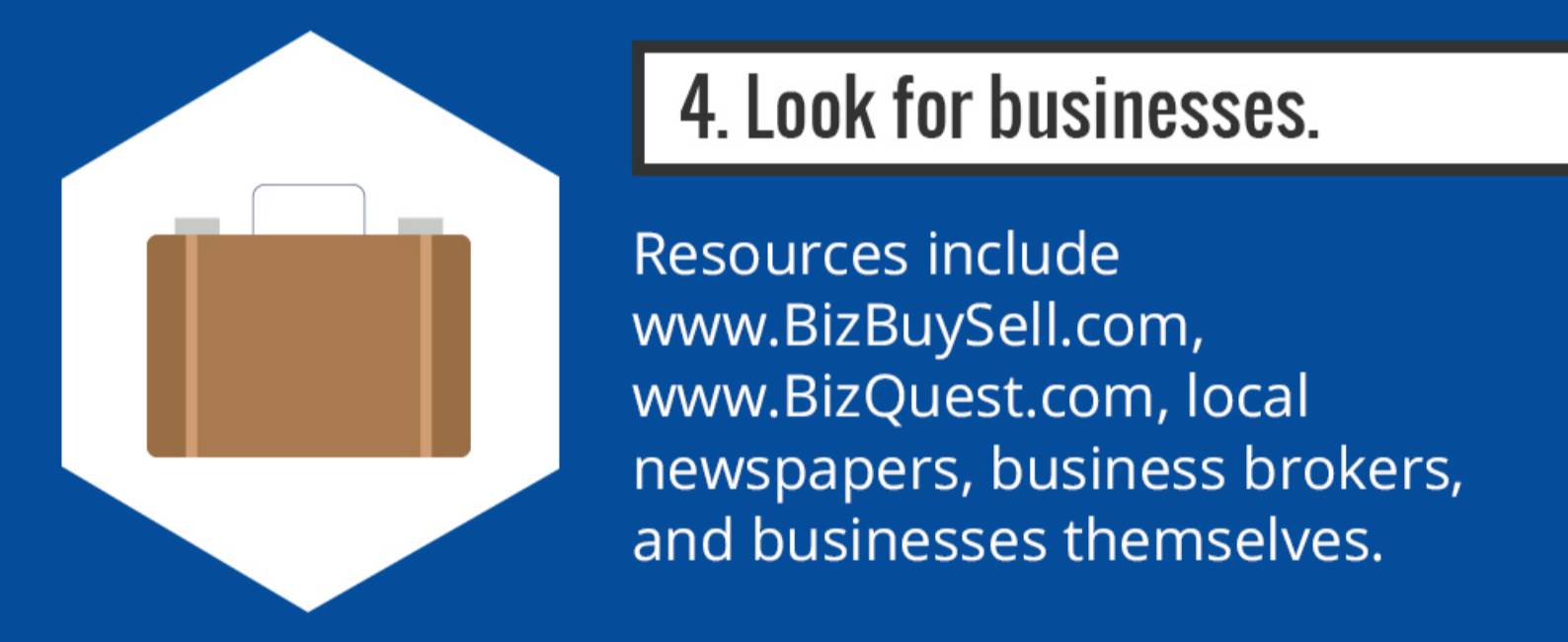
Step 4: Start looking for businesses for sale
Now that you have an idea of the type of business you want and what you can afford, you can start searching for businesses for sale within your criteria. The most common place to find a business for sale is online but there are a few options in addition.
Business-for-sale websites
- The two largest are BizBuySell.com and BizQuest.com
- You can search based on industry, location, asking price, cash flow, and more.
Pro Tip: you can set up email alerts to notify you as soon as any new businesses are listed that match your specified search criteria so that you can be one of the first know.
Local newspaper classified ads in the “Businesses for Sale” section.
Buyer’s business brokers
- Although the majority of business brokers work as seller’s brokers, you can find buyer’s brokers who assist the buyer in finding and purchasing a business (for a fee) based on your search criteria.
- A buyer’s broker may help with the following: narrowing down your search, prescreening businesses for you, finding businesses not listed online, negotiating, and assisting with paperwork.
The business itself
- If there is a particular business you are interested and it is not listed, you can ask the owner of a business directly if he/she is interested in selling.
A pre-qualification is a great way to get a headstart on your application and will help in your negotiations. There is no credit check required and you’ll receive your pre-qualification letter and borrowing estimate within 24 hours.
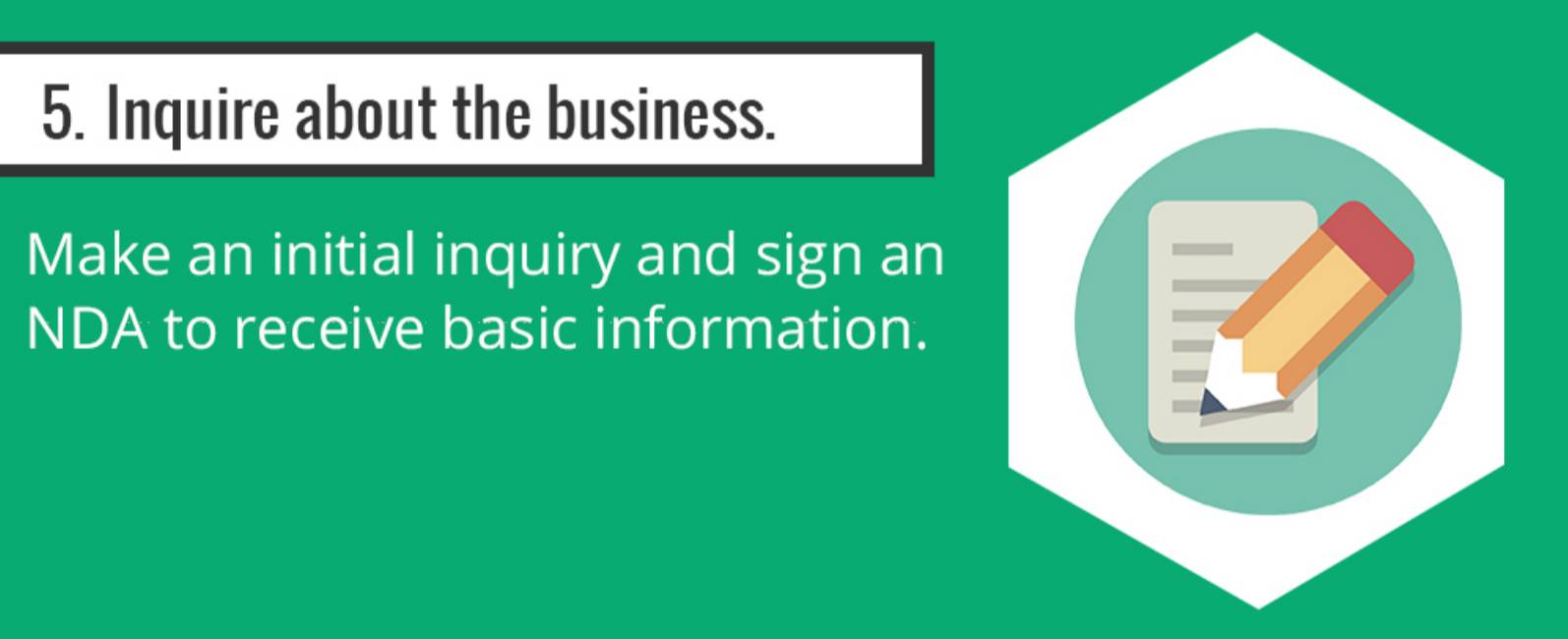
Step 5: Make an inquiry to receive initial information about the business
When you find a business you’re interested in, you can inquire about the business to receive some basic information. The amount of information you receive will vary and most sellers and brokers will require that you start by signing a non-disclosure agreement.
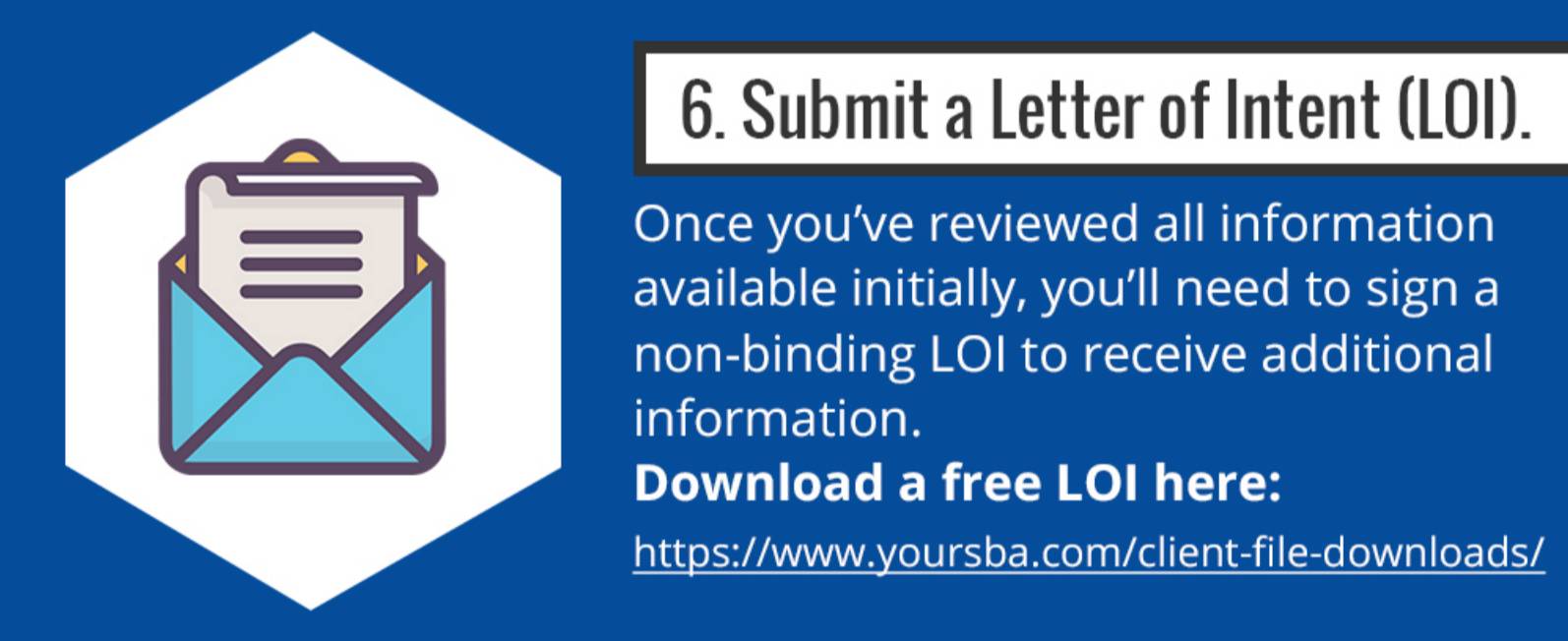
Step 6: Submit a Letter of Intent to buy the business
If you want to continue forward with a business after reviewing the initial information, most sellers or brokers will require you to submit a Letter of Intent (LOI) to buy the business in order to receive additional information on the business.
A letter of intent is a non-binding agreement expressing your intent to purchase the business contingent upon satisfactory review of all remaining business information and your ability to secure financing.
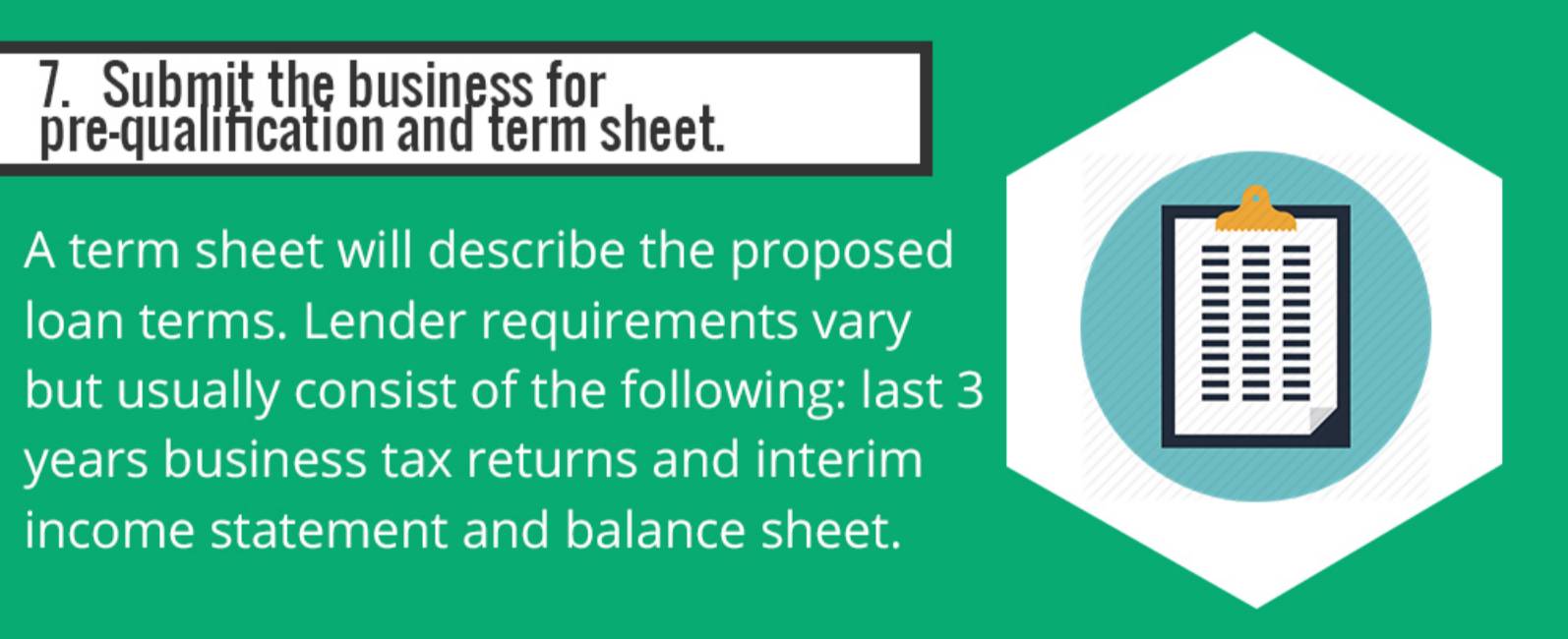
Step 7: Submit the business for pre-qualification to receive a term sheet (or proposal) from the lender
To continue with SBA financing, you’ll need to submit the business-related information to the lender. A lender will issue a term sheet with the loan terms based on this information.
Different lenders require different information for business pre-qualification but most consist of the following:
- Business Offering Memorandum – if available
- Business Tax Returns – for the last 3 years
- Interim Income Statement
- Interim Balance Sheet
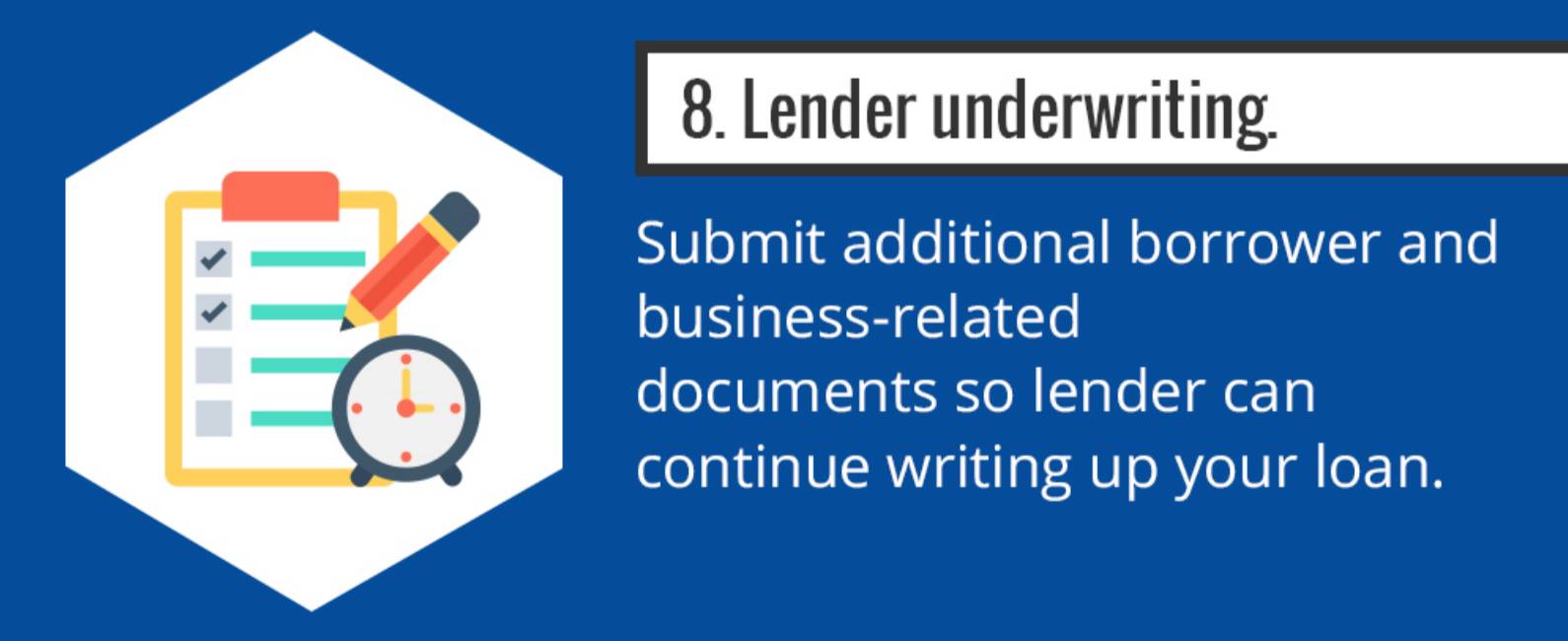
Step 8: Submit additional application documents for lender underwriting
A lender will request additional information and documentation from you and the business so that they can continue their review. Most of this information does not take much time to complete with exception of your business plan and projections and assumptions. You can find a list of items typically needed here.
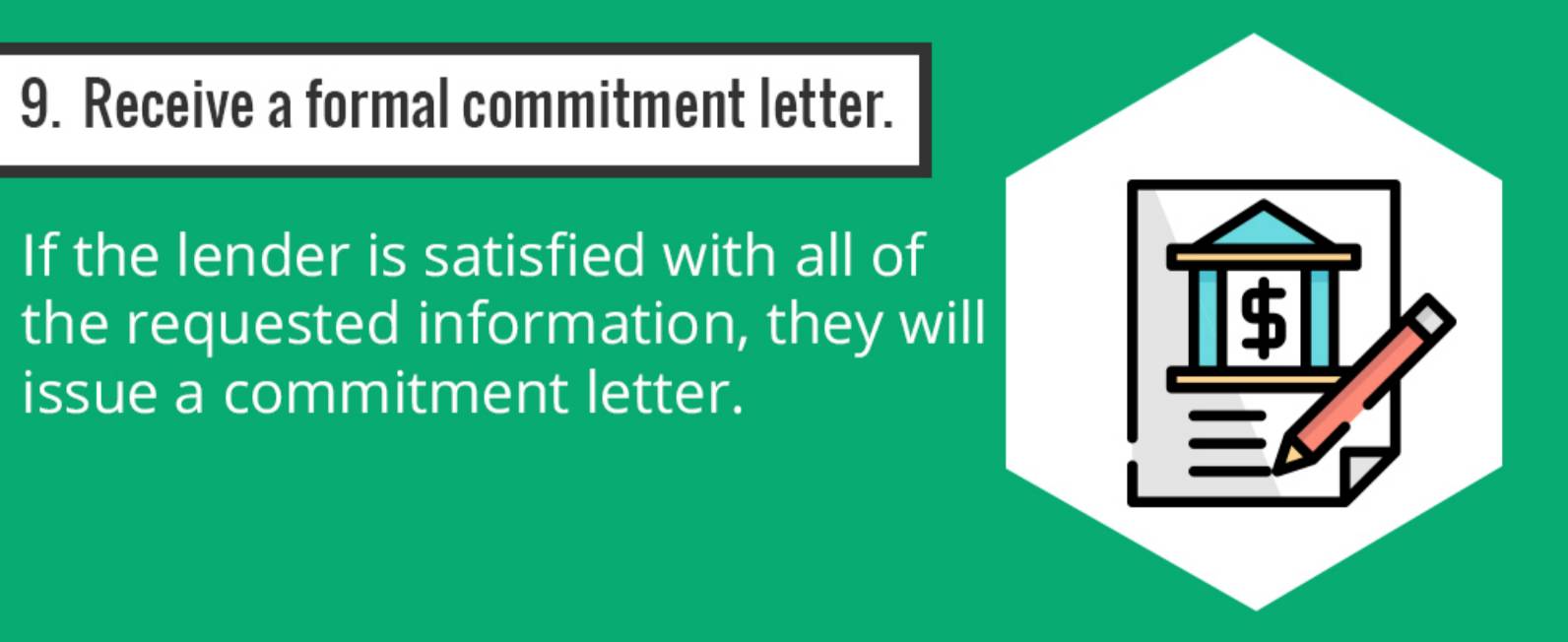
Step 9: Receive a formal commitment letter from the lender
If the lender is satisfied with the additional documents requested from you and the business, they will issue a formal commitment to lend with the final loan terms.
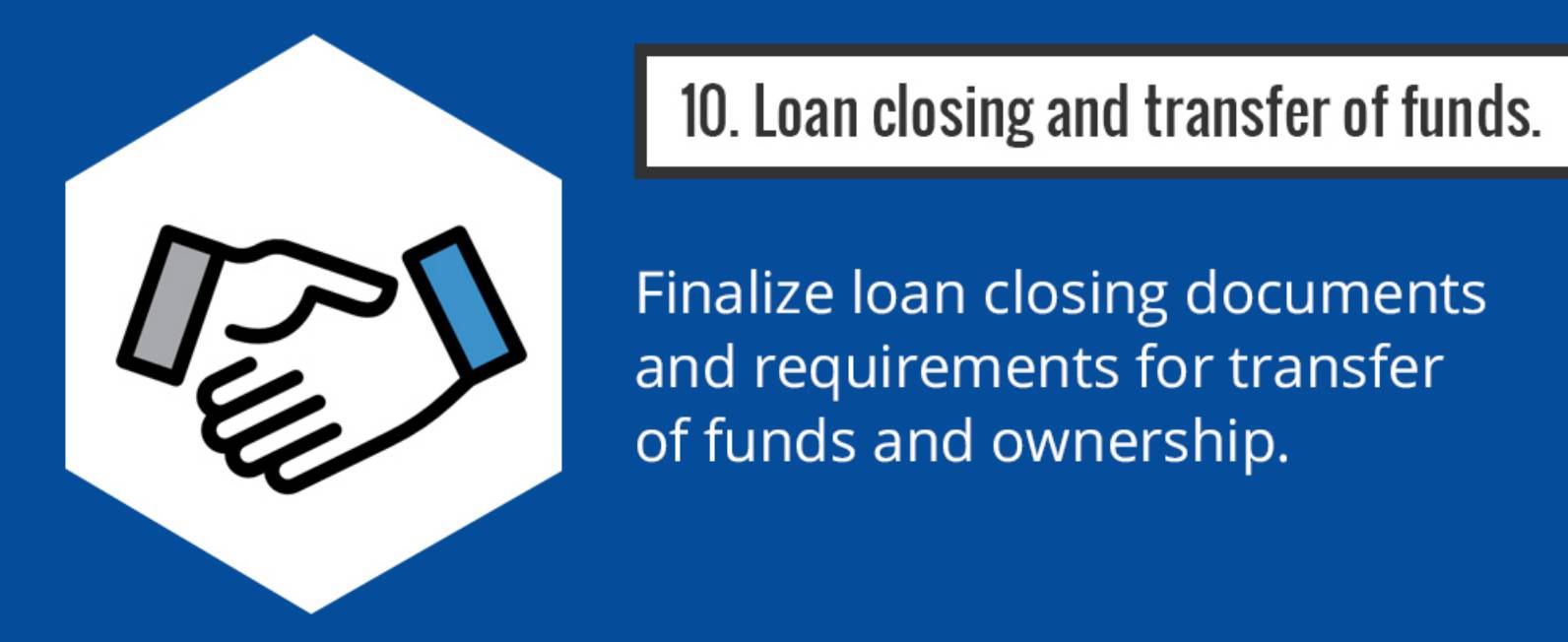
Step 10: Loan closing and transfer of funds
Before final loan closing, there are a number of items you’ll have to complete including obtaining life insurance and completing a business valuation. Congratulations, you are a business owner!
HOW DO I GET STARTED?
The best online SBA loan platform is YourEdge™ by YourSBA.com:
- Get prequalified to buy a business within 24 hours
- Start here with YourEdge™
- Find out how much you may qualify for using our SBA Loan Calculator tools here.
- Business acquisition loans from $350,000 to over $5 million.
- 5x success rate of your bank
- No fees
- No credit check / No hard credit pull
- No bank runaround
- Online, streamlined application accepted by all of the most aggressive SBA lenders for competitive interest rates and a 95% success rate.
